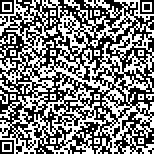下载中心
优秀审稿专家
优秀论文
相关链接
摘要

大气温室气体监测仪GMI(Greenhouse gases Monitor Instrument)是高分五号(GF-5)卫星载荷之一,主要用于全球温室气体含量监测和碳循环研究。高精度反演是卫星大气CO2遥感的基本需求。地表反射率影响卫星遥感辐射量及辐射传输过程中的地气耦合过程,严重制约着CO2的反演精度,针对GMI开发高精度的大气CO2反演算法,地表反射是一个需要重点考虑的因素。城市是CO2重要的发射源,且城市下垫面存在明显的二向反射特性,加上城市大气条件不良,复杂的地气耦合效应存在这都考验反演算法的准确性和鲁棒性。本文针对北京城市地区,利用2011年—2016年共5年的MODIS(MODerate-resolution Imaging Spectroradiometer)地表二向反射分布函数BRDF(Bidirectional Reflectance Distribution Function)数据,构建了适合利用单次观测数据反演的BRDF模型,并提出一种同时反演地表BRDF参数和大气CO2含量的算法。结果表明在550 nm波长处气溶胶光学厚度AOD(Aerosol Optical Depth)小于0.4时,大部分GMI模拟数据的反演误差控制在0.5%(~2 ppm)内。利用GOSAT (Greenhouse gases Observing SATellite)实测数据的反演结果与修正后的日本国立环境研究所NIES(National Institute for Environmental Studies)反演结果进行对比,其平均误差为1.25 ppm,相关性达到0.85。本算法满足GMI数据在北京城市区域高精度CO2反演的需求,并使得反演高值气溶胶区域数据成为可能,增加了GMI观测数据的利用率。
The greenhouse Gas Monitor Instrument (GMI) is a payload of GF-5 satellite. It is mainly used to ascertain the global distribution of carbon dioxide (CO2) and methane (CH4) and carbon cycling studies. Surface reflection is an important factor for developing a high-precision column-averaged carbon dioxide dry air mole fraction (XCO2) retrieval algorithm for the GMI short-wave infrared data. Urban areas are an important source of CO2 emission, and an apparent directional reflection occurs in the urban underlying surface. However, the aerosol optical depth (AOD 550 nm) in Urban Beijing is relatively large, and combining atmospheric scattering and surface directional reflection makes the retrieval of XCO2 in Beijing urban area difficult.
In this study, we investigate the MODIS Bidirectional Reflectance Distribution Function (BRDF) data in Beijing urban area in 2011-2016. The three parameters (fiso, fgeo, and fvol) of the BRDF model vary with season. The ratio of fiso to fgeo and of fiso to fvol slightly change. Statistics show that the average value of fgeo/fiso is 0.42±0.09 and fvol/fiso is 0.23±0.03. The simplification of the BRDF model allows us to invert the BRDF parameters simultaneously through one observation of the GMI. We present a new algorithm to improve the accuracy of XCO2 in Beijing urban areas through simultaneous retrieval of BRDF parameters. An a priori value of AOD is provided by using a directional polarimetric camera, which is onboard the GF-5 satellite. The MODIS MCD43A1 product is used to build an a priori surface BRDF database after filtering and resampling. The a priori CO2 profile is estimated on the basis of the analysis of CO2 profile distribution in Beijing area. The monthly a priori covariance matrices of CO2 at a grid cell (2°×3°) on the globe is precalculated as input parameters using the carbon tracker database. The measurement error covariance matrix is (y/SNR)2, and the signal-to-noise ratio (SNR) used is the result of a laboratory test. This SNR is a tentative value and must be tuned after acquiring in-orbit data.
To determine the effect of aerosols and surface BRDF reflection on the retrieval of XCO2, we simulate GMI measurements in the spectral range of 6310-6380 cm-1. We use absolute radiance, ratio radiance, and BRDF methods to retrieve the simulation data separately. The error of the absolute radiance method exceeds 30% when the AOD is 0.05 considering the changes in surface albedo caused by surface direction reflection, and the error of the ratio radiance method is less than 1% in most observations. By contrast, the BRDF method has high accuracy, and its error is less than 0.2%. In the case of high AOD (0.4), the maximum error of XCO2 is 4.75% without the inversion of BRDF parameters. The evaluated precisions of the retrieved XCO2 are less than 0.5% in most cases. To validate the correctness of our algorithm for the measured data, we retrieve the observations of the AOD less than 0.4 from Greenhouse Gases Observing Satellite (GOSAT) L2 data in Beijing urban area in 2016. We find that the correlation is 0.85, and the average error is 1.25 ppm by comparing our retrievals with GOSAT NIES XCO2. The retrievals are stable, except the results in summer. The AOD of 64.28% observations in summer is larger than 0.3, and the rest is close to 0.3.
The difference in albedo caused by the BRDF characteristics of the urban underlying surface significantly influences the accuracy of XCO2 retrievals, and the high-precision CO2 concentration information cannot be obtained when it is not corrected. The aerosol conditions in urban areas are frequently complex. The proposed algorithm for the simultaneous retrieval of surface BRDF parameters and CO2 content can accurately describe the surface direction reflection. The proposed algorithm improves the retrieval accuracy and data utilization of GMI data in the urban areas of Beijing.

